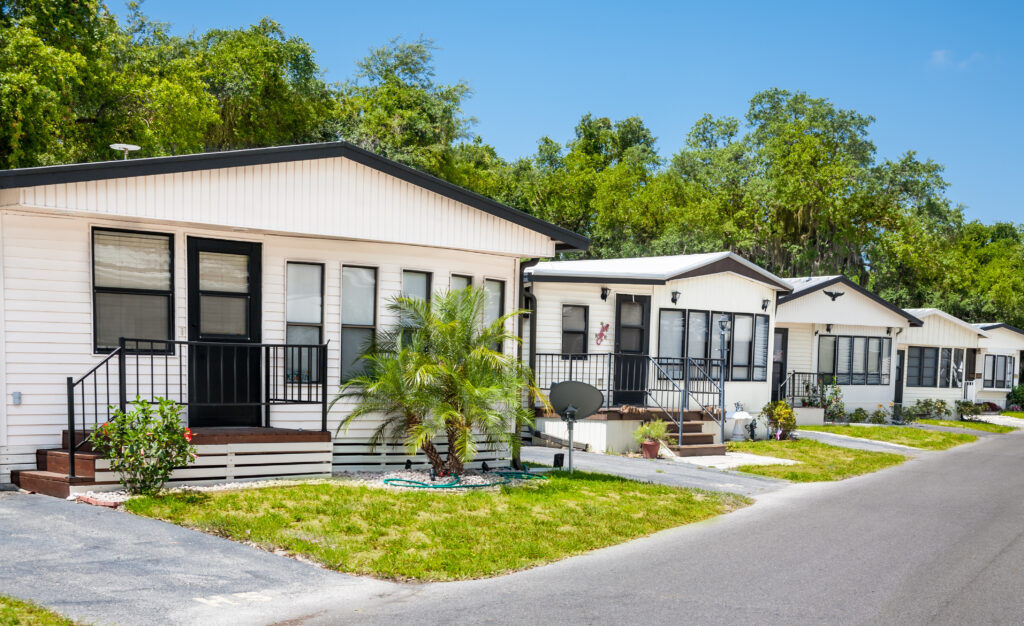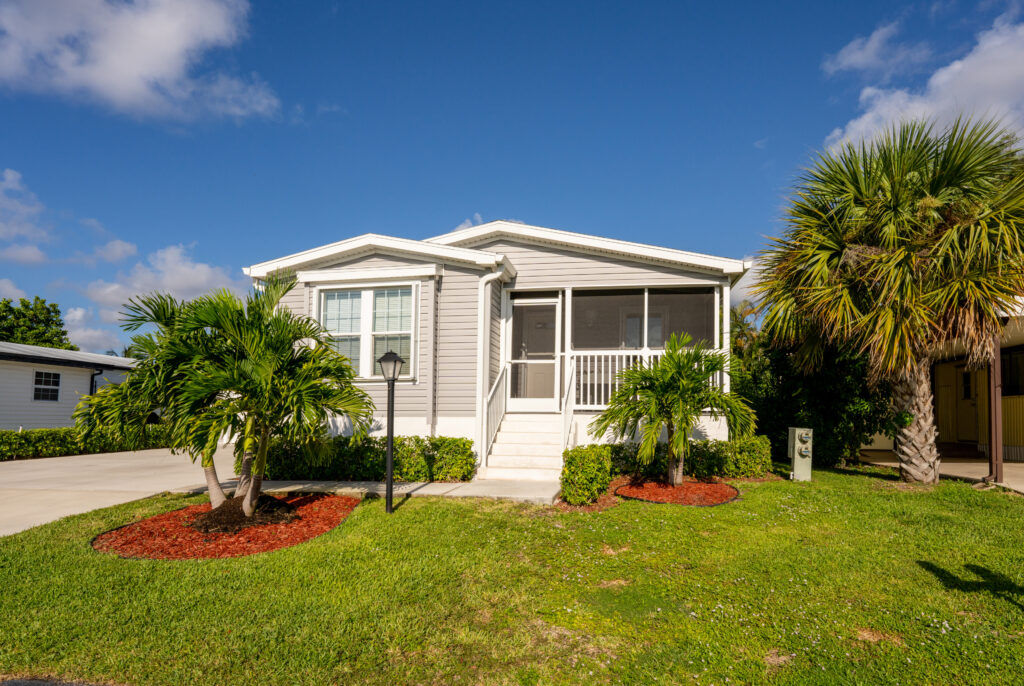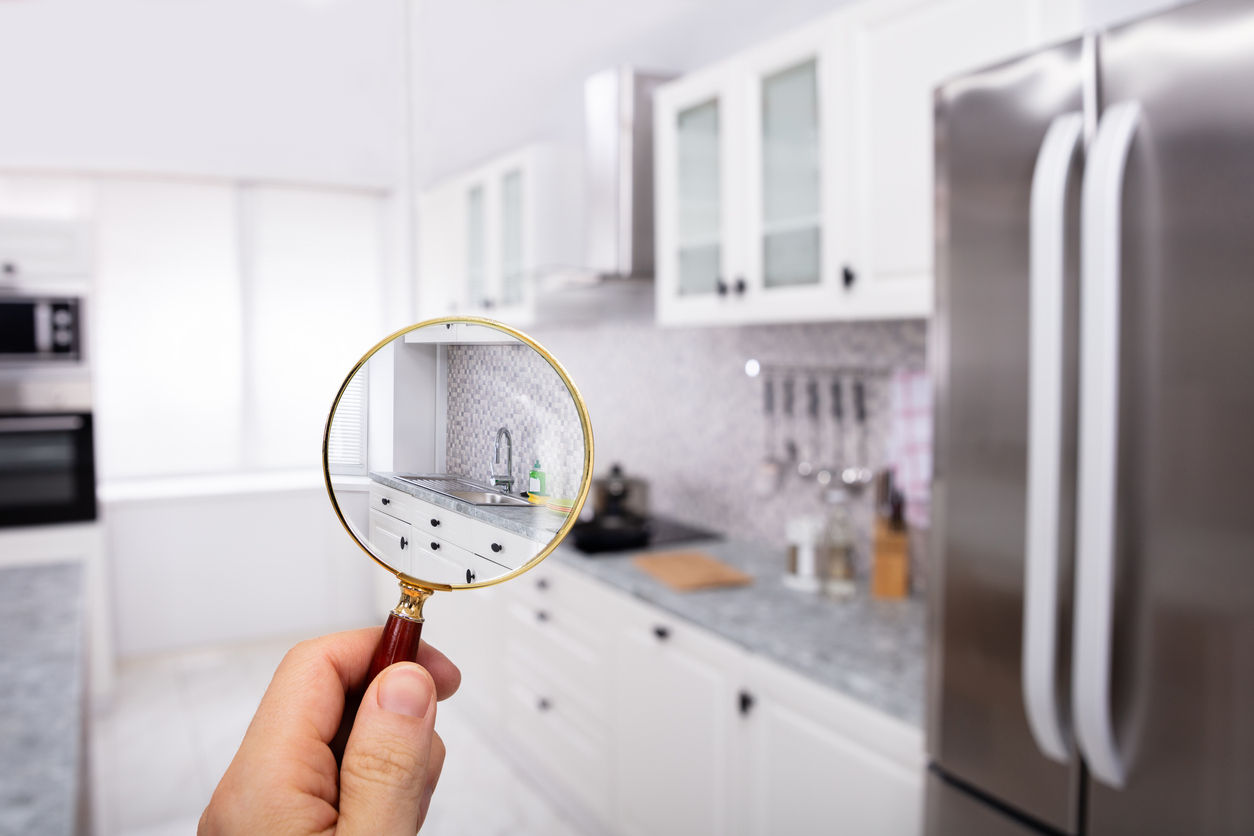- Homebuyers Love Taking on New Construction
- Modular Homes: What are they?
- The Benefits of Modular Homes
- Average Total Cost Of A Modular Home By Square Foot
- Buying Land to Construct Your Modular Home
- Modular Home Construction Cost Factors
- Land Clearing
- The Cost of the Lot Isn't Included When Constructing Modular Homes
- Getting Modular Home Setup Quotes
- Are Modular Homes a Good Investment?
- Start Your Modular Home Journey
Modular Home Prices: Are They the Right Home Choice for You in 2023?
Click here to browse our Real Estate Agent Directory and contact top-rated agents in your area!
Are you looking at building a new home and saying, “WOW,” in shock at incredibly high construction costs?
You’re not alone. The cost of new construction has been increasing steadily for decades, but in the past few years, fueled by labor and supply chain strains, those expenses have shot through the roof. Just the cost of building materials alone increased by approximately 30% since 2020. So it’s no wonder that despite a housing shortage across the country, new construction of single-family homes has yet to increase to meet demand.

The reality of our current economy is that traditional stick-built homes are expensive. But new construction is attractive; it allows homeowners to choose exactly what they want in a home and get the benefit of living in a new house. In addition, new construction usually means far lower maintenance, which is particularly attractive for new homeowners.
If you’re looking for an alternative to stick-built homes, modular homes might be the ideal option. Modular homes offer much of the same benefits as traditional construction but at a fraction of the cost.
Find out if modular home construction is the right fit for your next home.
Homebuyers Love Taking on New Construction
New construction homes are great, and buyers love them largely because they are brand new, untouched, and completely free of any wear and tear that comes with a home purchased on the secondary market.
New stick-built homes almost always have modern features and amenities such as open floor plans, energy-efficient appliances, and high-quality insulation that make life more convenient and enjoyable. Additionally, new construction homes often come with warranties and guarantees that provide peace of mind and protection against potential defects or issues. These warranties can be an outstanding benefit for homeowners and investors if something goes wrong. It gives them a sense of security in their investment and helps justify the often higher cost that buyers pay.
Where new construction homes really shine is that they allow buyers to personalize their space and choose custom finishes and features that reflect their unique tastes and preferences. As a result, they offer an unparalleled opportunity for homebuyers to customize their living spaces according to their individual styles and needs.
>> AGENT ANSWERS: How do I find the value of a mobile home?
Many builders offer buyers the option to choose from a variety of floor plans, layouts, and finishes to create a home that perfectly fits their lifestyle and vision. From selecting the type of flooring and cabinetry to choosing the color of the walls and the type of appliances, new construction buyers usually have a wide range of choices to make their home their own.
The ability to customization allows homeowners the creative capacity to bring to life a space that meets their functional needs but also reflects their personality and aesthetic preferences. For many, the ability to customize is worth the premium they pay.
But what if buyers could have that same level of customization but for less?
Modular Homes: What are they?
Modular homes have been on the market for decades. In fact, they originated with Bring Home Kit Homes, first released in 1908. Construction that takes place away from the building site only further advanced with the advent of the assembly line. In 1958, the first off-site, double-section home was built, and since then, the modular house has been steadily evolving and advancing.
Modular Homes are Real Homes
Despite the commonly believed myth, modular homes are real homes. While they come in varying levels of quality and permanency, the days when a modular home equated to simple manufactured homes that were just plopped on a land parcel are over.
A modular home is a prefabricated structure built in a factory and then transported to the home site for final assembly. They can be a small, single-story home like a tiny house. Alternatively, modular homes can be large, luxury family homes.
Would you believe you can buy a 7,000-square-foot, two-story, four-bedroom, five-bathroom home that’s entirely modular?
The world of manufactured homes has changed, and today they offer much of the same benefits as stick-built homes.
The Difference Between a Manufactured Home and a Modular Home
While manufactured homes and modular homes might sound the same, and they are similar in that they are both constructed off-site in factories, there is a key difference. While a modular home is built off-site, it has a permanent foundation that it’s fixed to, meaning that once built, it can’t be moved.
On the other hand, modular homes do not have a permanent foundation and, therefore, can be moved. Because manufactured homes are more mobile, they earned the name “mobile homes.”
Buyers should know that manufactured homes often depreciate in value far faster than modular homes. In fact, evidence has shown that modular homes actually hold their value or appreciate with time, similar to traditional homes.
The Benefits of Modular Homes
Modular home prices are undoubtedly one of their most attractive features. But beyond just price per square foot, a modular home offers buyers even more direct and indirect benefits.
Controlled Building Environment
Unless you work in construction, you’ve probably never considered the cost of building and how weather and the environment can impact materials, labor costs, and the end product.
Unlike traditional site-built homes, modular homes are constructed in a controlled environment where materials are protected from the elements and quality control is maintained. That means you don’t have to worry about rainwater getting into your subflooring, your roof getting damaged before it’s complete, or tradespeople being unavailable. Having a controlled environment also keeps the modular home cost lower.
>> AGENT ANSWERS: What should I know about buying a mobile home?
The modular construction process involves assembling pre-built modules or sections of the home in a factory, where the building process can be closely monitored before they are transported to the home site for final assembly. In addition, materials are kept clean, and all the necessary professionals are working in-house. This means that the construction process is more efficient and faster and (depending on the provider) often leads to an equal or better quality end product.
Modular Homes are Customizable
One of the biggest advantages of modular homes is their flexibility. A modular home ranges in size and functionality. As with site-built homes, each builder will have their own floor plan offering and the ability to customize size and layout. If there’s a particular floor plan or design that a buyer loves, but they either want to add square footage or make changes to the layout, this capacity of often available to you.
Modular homes can be customized to meet the specific needs and preferences of the homeowner, with a wide range of options for finishes and features. This allows homeowners to design a home that meets their exact specifications without the cost and time associated with traditional site-built homes.
Buyers should not be concerned that buying a modular home means design options will limit them. While customization will always affect the final cost of a prefab house, these options are available.
More Environmentally Friendly Building Conditions
There’s no way to get around it, new construction is damaging to the environment. And it’s usually not a factor that most buyers or investors even consider. However, unfortunately, new construction is one of the most wasteful industries.
When it comes to building a new home, it’s easy to focus on the excitement of a fresh start and overlook the environmental impact of the construction process. Here are some ways on-site construction of a single home can be damaging to the environment and how off-site modular construction lessens the impact:
- Site Disruption: Building a new home involves site clearing using heavy equipment, which can include clearing mature vegetation, grading land, and removing topsoil and leading to unnecessary erosion. Modular homes require far less site preparation and, therefore, less disruption to the surrounding area.
- Chemical Spills: During construction, chemicals such as gasoline, diesel fuel, paint, concrete, and more can spill. These spills contaminate the soil and groundwater, which can have long-lasting impacts on the environment and even human health. With off-site modular home construction, spills are isolated to a warehouse, where they don’t have the opportunity to enter the environment.
- Water Use: Building a new home requires significant amounts of water, particularly during the site preparation and foundation stages, contributing to water stress and strain on local water resources. Depending on the type of foundation and site preparation, manufactured homes often require far less water usage during construction.
- Loss of Materials: Materials such as lumber, concrete, and roofing materials are often exposed to the elements during construction, leading to damage and loss. This creates waste and increases the environmental impact of the construction process. When construction happens in a warehouse, materials are protected from weather, therefore eliminating this waste source.
- Material Waste: Construction sites generate a significant amount of waste, including excess materials, packaging, and debris that usually just get thrown away instead of repurposed. This waste ends up in landfills, contributing to environmental pollution and waste management issues. When construction occurs in a warehouse, materials are used more efficiently, creating less waste.
- Noise Pollution: Construction sites can generate significant amounts of noise, impacting both humans and wildlife, which can disrupt natural behaviors, causing stress and even harm to local wildlife. Modular home construction is far faster, therefore limiting the extent of noise pollution.
Faster Construction
One of the most attractive features of modular homes is that their construction is almost always far faster than site-built homes. Depending on the home site location and the type of house selected, modular homes take between 16 and 31 weeks to complete. In comparison, site-built homes take 28-37 weeks to build and often encounter far more delays that can draw this timeline out even further.
If you’re on a deadline or just eager to move into your new home, modular and manufactured homes will help make it happen faster.
Modular Home Prices are Lower
Overall, modular home prices are lower than site-built homes. Depending on the provider, modular home prices range between 5-20% less than traditional construction costs.

Average Total Cost Of A Modular Home By Square Foot
As with any construction, the total cost per square foot will depend on the model you choose, custom changes, square footage, finishes, and of course, your location. Modular home construction costs in California will be significantly higher than modular home construction costs in a less expensive state. You can save money by avoiding customization and selecting a model from the builder’s catalog.
Modular homes can be customized to your preferences and come in a huge range of price points. However, on average, you can expect to pay between $120,000 and $270,000, not including sales tax.
The best way to compare different modular home options is by focusing on the square footage and how much you are paying per square foot. When you’re just looking at purchasing the unit and not comparing installation costs, expect to pay $50 to $100 per square foot.
Most modular home buyers require a full installation. An average modular home cost with installation can range between $80 and $160. However, keep in mind if you start adding on custom changes and designer finishes, the full price per square foot can easily stretch over $200.
Cost of Modular Homes vs. Building Stick-Built
Modular home prices are always lower than comparable stick-built homes.
As with modular homes, the cost varies greatly by location. For example, the average price per square foot for a new construction home in California is $500. According to Statista, less expensive regions like Portland and Las Vegas come in at around $260 per square foot.
To fully compare modular home prices with traditional construction costs, get in contact with your local builders or find a local real estate agent with FastExpert.
Buying Land to Construct Your Modular Home
The land you buy will have a major impact on your modular home price. If you want to keep your costs down, you want to find land that is easily accessible and that already has utility connections. Utility connections can cost tens of thousands to hundreds of thousands of dollars.
Modular Home Construction Cost Factors
If you’re starting to shop for modular homes, remember that your expenses won’t stop at the advertised modular home prices. Just like any traditional construction, there are going to be additional expenses that you’ll be responsible for on top of the modular home cost.
Land Clearing
Even if you’re purchasing a lot in an established development, there’s almost always going to be land clearing required as part of your site prep.
Foundation Installation
The cost of a modular home foundation will vary greatly depending on the type of house selected and the land. Pricing is almost always by square foot. On average, a modular home foundation costs $8,500. However, you should budget between $7-30 per square foot. Keep in mind a basement foundation installation will cost significantly more than a basic slab foundation installation.
Water Main Installation and Utility Connections
If utility construction such as sewer and electrical is required on your land, these costs could be shocking. Make sure you have utilities checked before making an offer on land, and if they are not present, then add a liberal estimate to your total cost.
Sometimes, homeowners in remote areas can save money by installing a septic system. However, you need to ensure you follow local building codes and regulations.
Building permits
Building permits are typically required for modular homes, just as they are for traditional stick-built homes. The cost of these permits will vary depending on the location and size of the house, as well as any additional requirements or regulations specific to the area. Generally, the cost of a building permit for a modular home will be similar to that of a site-built home, as both require the same inspection and approval process. Therefore, it’s essential to research the specific requirements in your area to ensure that you have all the necessary permits and approvals before beginning construction on your modular home.
Failure to obtain the proper permits can result in fines or legal issues down the line. Fortunately, most modular home construction companies will assist with obtaining building permits. Be prepared for permits and fees to cost up to $5,000.
Sales Tax
You got that right; depending on your state and jurisdiction, you might be hit with a sales tax bill when buying a prefab, modular, or manufactured home. So take this into consideration when calculating your total cost of construction.
The Cost of the Lot Isn’t Included When Constructing Modular Homes
When buying a modular home, you’re buying the house and often paying for installation, but these costs don’t include the cost of your land.
Unless you already own a lot, you’ll need to source appropriately zoned and serviced land for your modular home. A local real estate agent is your best resource for finding the best location on a lot suitable for a modular home.
When buying land for new construction, whether you’re buying a modular home or new construction, working with a real estate agent is crucial. They will be able to show you lots in master planned developments or source plots of land in remote locations.
A real estate agent will be valuable when reviewing zoning and development restrictions. You want to be confident that the land you choose will suit your dream home.
Find top real estate agents in your area with FastExpert. Easily read verified reviews to find the agent that best fits your needs.
Getting Modular Home Setup Quotes
The best way to get accurate modular home prices is by contacting modular home builders and installers in your area. They will provide a detailed quote based on your specifications and land (if you’ve already purchased it).
These quotes will give you firm information on whether modular or traditional construction is the best option.
Are Modular Homes a Good Investment?
Modular homes can be an excellent investment. Unlike manufactured homes, modular homes can appreciate with time. While they still carry a certain stigma, modular homes are becoming increasingly popular. This is because they are more affordable to build and create less waste.
Investors considering modular construction for investment properties are smart. By lowering their construction costs, they position themselves for higher returns on their investments. Because great quality modular homes look like traditional houses, they demand the same rental rates. Lower startup costs and the same revenue equates to higher cash flow.
Today, a good quality modular home will get still get a great price on the resale market. So if you’re concerned that a modular home is a bad investment, don’t be. Often, these homes demand close to, if not the same, resale price as traditional construction.
Start Your Modular Home Journey
Are you ready to buy a modular home? Start your journey by making connections with local modular home builders to get their costs and designs.
Then, talk to your mortgage broker or local bank to better understand what financing options are available to you. Keep in mind that financing a modular home can have more restrictions than traditional construction.
Once you’re educated on your modular home costs and financing options, it’s time to connect with a real estate agent to find the perfect block of land. Work with an agent who understands modular homes and new construction so you can have confidence in their advice and guidance.
To find the best realtor for your land purchase, review top real estate agents with Fast Expert. Agents are ranked by recent sales and customer reviews, making it easy to find the right professional for your purchase.
>>DISCOVER: 15 Common Types of Houses




